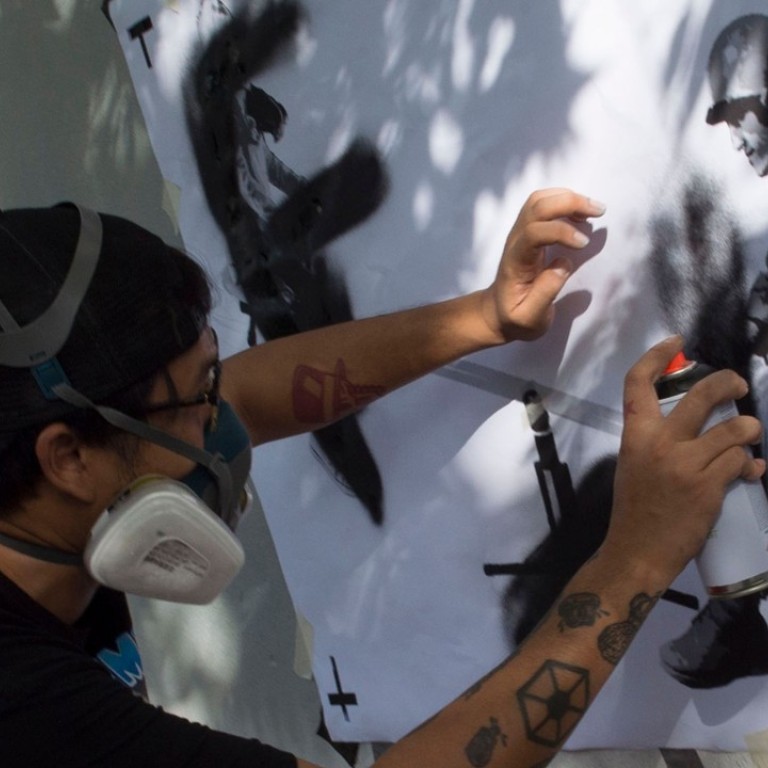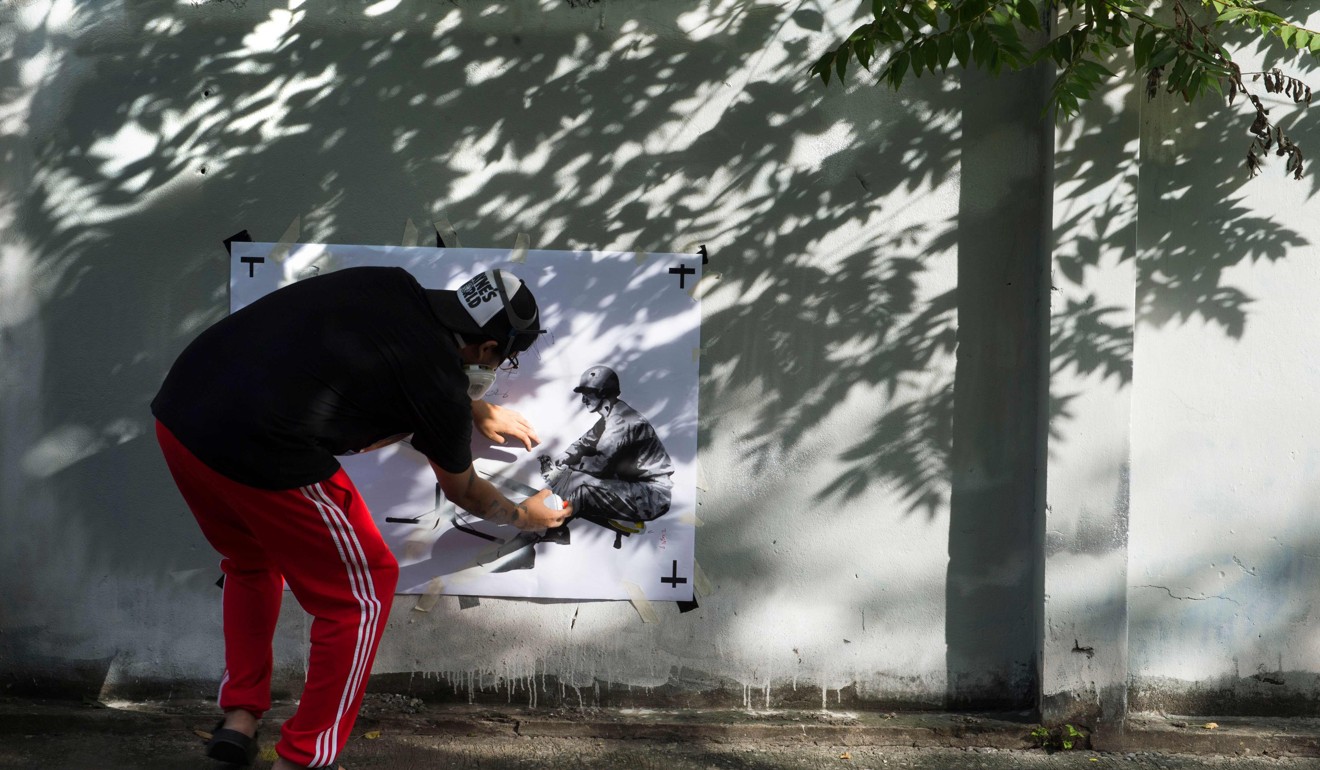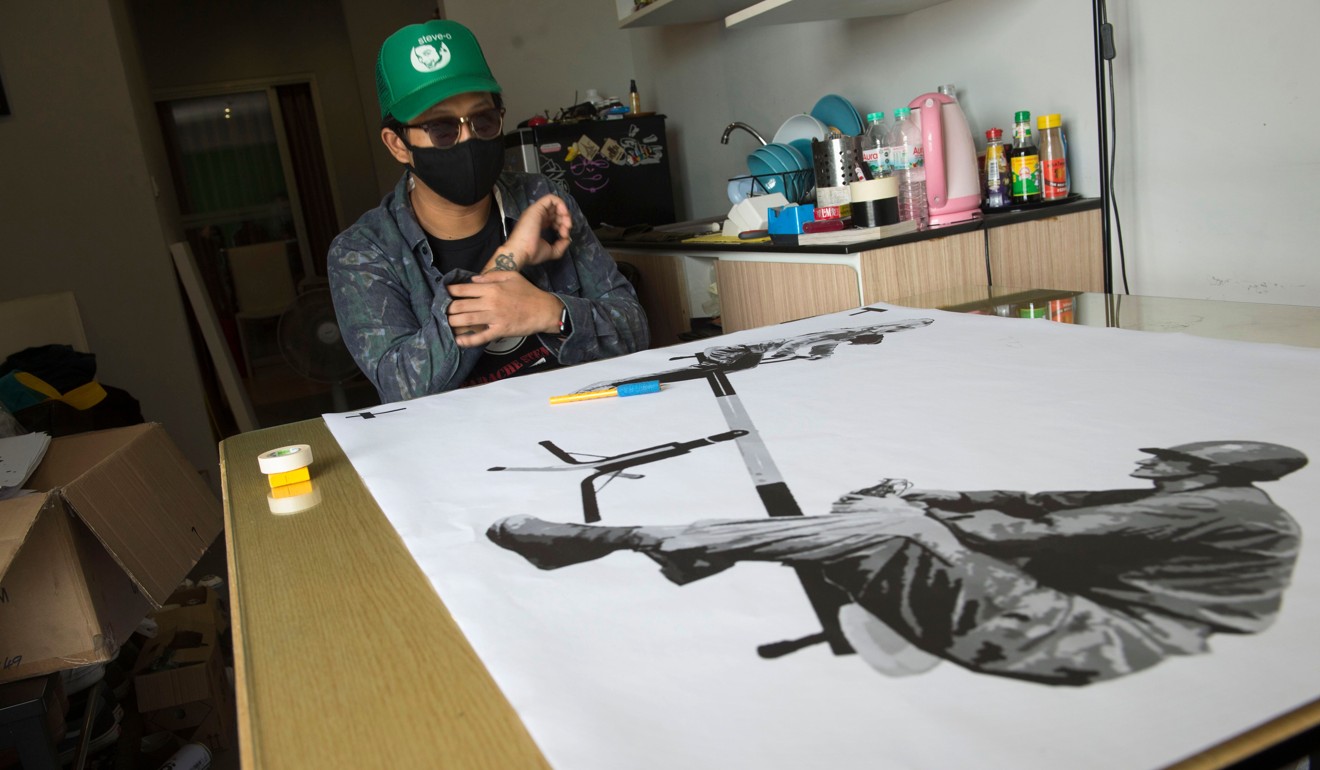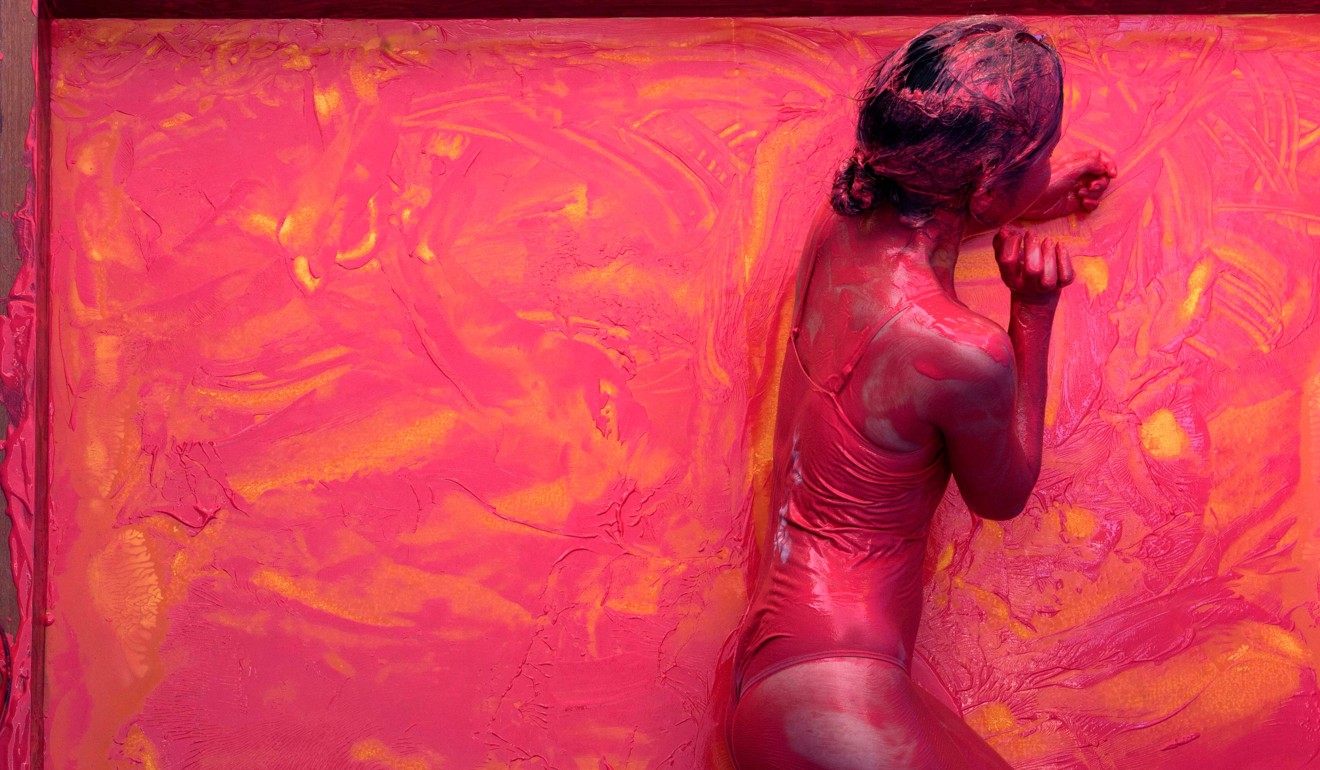
How Thailand’s ‘Banksy’ creates headaches for junta on Bangkok walls
New wave of street artists use graffiti for dissent
Thailand’s junta chief caricatured as a “lucky cat” with a paw raised to rake in money, or his face crossed out by a thick, red line – daring graffiti is cropping up across Bangkok as the city’s walls become a canvas for rare political scorn.
The pioneer of the new wave of street artists is “Headache Stencil”, whose spray cans satirise the powerful in a country where free expression has been muted since a 2014 coup.

Dubbed Thailand’s “Banksy”, Headache – whose nickname alludes to the pain he hopes to inflict on the mighty – catapulted to fame in January with a piece skewering junta number two Prawit Wongsuwon, who was struggling to explain his collection of undeclared luxury watches.
The stencil art showing Prawit’s face inside an alarm clock was a jab at the lack of financial transparency by generals who seized power claiming that only they could save the country from untrammeled corruption. It was a bold move in a tightly-controlled country where simply reading George Orwell’s 1984 novel in public is deemed defiant and whose well-connected elite are quick to file criminal defamation charges.
In Thai election, any government you like – as long as it’s the junta
Speaking at his Bangkok studio, Headache is unrepentant.
“The root of street art is that people have no rights, no voice,” he said, his face masked as much for a dramatic flourish as protection from authorities.
“The aim is to spread the words we want to say but cannot. So we paint them for those who walk by … for officials or the general public to understand.”
After the clock image went viral, police attempted to monitor the artist and city officials hit the streets to paint over subversive graffiti.

Prawit insists the watches were borrowed from friends, but nine months later Thailand’s anti-corruption body has yet to finish its investigation into the issue.
Headache again stole the spotlight in March – this time with graffiti showing a black panther crying tears of blood.
It was a reference to the case of a Thai construction magnate who was later charged with poaching one of the protected cats during an illegal safari hunt in a national park.
Once again, the artwork was a hit online, cheered for its brazen lampooning of another wealthy target. Much like “Banksy”, the British graffiti artist turned multimillionaire art auction darling, Headache’s carefully maintained mystique adds to the allure of his work.
And it has caught the imagination of a country where an increasing number of people are looking to art to dissect the anti-junta angst that lurks below the surface.
Four years after military coup, Thai protesters demand the junta hold an election in November
“Street art has a fast life … you can cover it with paint but once it is on social media, it stays,” said Apinan Poshyananda, artistic director of the Bangkok Art Biennale which debuts next month and will feature other street artists.
Headache now holds workshops across the country including in the northeastern provinces, the political heartland of the toppled civilian government.
Meanwhile a mushrooming number of galleries and studios are hosting dance and art performances addressing the kingdom’s toxic political culture and complex social issues in subtle ways that dodge censure.

Among the Thai artists is Kawita Vatanajyankur, 31, whose video installations allude to the notoriously poor working conditions in Thailand’s factories and fishing industry.
“It’s such a major issue and it’s something that we need to fix,” she said.
Kawita is part of a wider artistic awakening in Thailand, whose highly-skilled painters, sculptors and performers traditionally took inspiration from the conservative establishment, but who are now confronting different themes.
The launch of the Biennale will display work by headline names such as Marina Abramovic and the late Jean-Michel Basquiat, bolstering Bangkok’s claim to being the art capital of Southeast Asia.
‘The new parties need time’: Thai junta vows to lift politics ban in June after series of delays on promised election
Meanwhile the political winds are slowly changing.
Last week, Thailand’s junta partially lifted a ban on politics, with a long-delayed election next year promising to pit army-aligned and civilian politicians against each other.
That collision of values could provide ample material for street artist rebels like Headache.
His latest work tackles the impact of military spending – which has risen each year since the coup – on Thai society. It depicts a soldier on the heavy end of a see-saw, a young schoolgirl suspended in the air at the other.
“We put more budget towards weapons than brains,” he said.

.png?itok=arIb17P0)